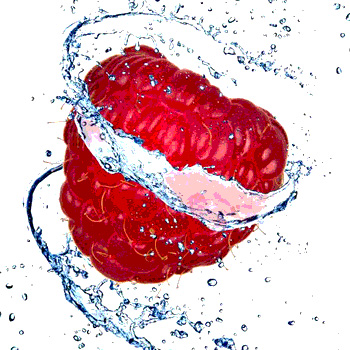Sanitation practices in the food industry have come a long way since Upton Sinclair’s The Jungle shocked our country to regulatory action with the Pure Food and Drug Act of 1906. Public scrutiny of how food is produced, processed and distributed has only increased over the past century, as product recalls and Salmonella outbreaks continue to reveal holes in our food safety net.
The problem? For years, ambiguous laws left food processors to decide for themselves whether or not conditions were sanitary enough to avoid contamination. The laws also provided limited oversight and focused only on reacting to food safety problems rather than preventing them.
As a result, many facilities skimped on sanitation or skipped it entirely. When pests and bacteria inevitably found their way into food products, these facilities elected to “spray and pray”—oftentimes with toxic fumigants and pesticides. It was little wonder that contaminated food continued to land on consumers’ plates and make national headlines.
An Ounce of Prevention
In the last decade, the Global Food Safety Initiative and more recently the U.S. Food Safety and Modernization Act have helped turn the tide toward a preventive approach to food safety. Today’s emphasis on Good Manufacturing Practices and Hazard Analysis and Critical Control Points means that more and more processors are assessing risks to food safety and implementing clearly defined, well-documented controls to prevent problems.
Sanitation is one of the basic building blocks of a strong food safety program, but it’s also one that sees the most slip-ups. Missing one routine cleaning may seem harmless, but today’s consumer climate allows no room for error. Consider the cost of failing an audit and consequently losing a supplier or distributor, having to issue a recall or seeing your facility’s hard-earned reputation compromised on the 6 o’clock news.
To put it simply, today’s realities require us to be more vigilant than ever in our sanitation practices. Pathogenic, drug-resistant bacteria are on the rise because of changes in our lifestyles. We consume more ready-to-eat, perishable foods, which can be incubators for pathogens like Listeria. The mangoes we eat in the winter and curries we find in the grocery aisle are a sign of new food production economics: food is distributed globally through longer supply chains, which allow multiple entry points for bacteria, thus increasing the potential risks.
That’s where proactive sanitation comes into play, by keeping pests and the bacteria they carry at bay. Infestations bring with them their own host of problems such as structural damage, product contamination and even threats to employee health. To pests, food-processing facilities look like luxury hotels with all-you-can-eat buffets, offering comfortable temperatures, fresh meals on the production line and frequent invitations to enter through open doors and loading docks. Once inside, pests can be difficult to detect; warehouses, storage areas and processing equipment offer numerous nooks and crannies that provide perfect hiding spots.
Culture of Clean
Implementing stringent sanitation as part of an Integrated Pest Management (IPM) plan is key to ensuring food safety and maintaining audit compliance in today’s regulatory environment. IPM begins with a risk assessment of pest entry points and focuses on proactive methods of control instead of reactive chemicals. Sanitation is one such proactive control, and together with IPM it helps ensure your facility is food-safe and germ-free.
Creating and maintaining a “culture of clean” should be your most important defense against contamination, which means zero tolerance for pests, spills, debris and waste. Not only should you implement daily, weekly and monthly cleanings, you should also schedule a thorough deep cleaning at least once a year. Educate your employees to look out for “hot spots” where pests and bacteria can thrive, and work with your pest management professional and maintenance staff to identify and eliminate threats.
To give your facility a contamination-free clean, concentrate your sanitation efforts on the following key areas.
• Building Exterior
The threat: Frequent deliveries require doors and docks to stay open for long periods of time, making it easy for pests to enter.
Sanitation solutions: Keep gutters and rooftop ledges and vents free of debris, especially leaves that collect moisture and attract pest birds. Also be sure to remove standing water from leaky HVAC units.
Pressure-wash the building exterior and sidewalks. Remove any bird droppings, which can contain harmful bacteria that cause diseases like histoplasmosis, toxoplasmosis and encephalitis.
Position dumpsters at a distance from the building, and regularly clean and rotate them to prevent grimy buildup and lingering odors. You may want to consider “foaming” dumpsters regularly with an organic cleaner to remove food residue, especially along their interior walls, that can attract pests.
• Employee Common Areas
The threat: Dirty dishes, drink spills, overflowing trash bins and lunches left in lockers invite ants, flies, cockroaches and other pests in for a meal.
Sanitation solutions: Tightly line and cover all trashcans to limit exposure, and remove trash daily. Throw out foods that are past the expiration or “use by” date to discourage bacterial growth.
Thoroughly sweep and mop break rooms, and disinfect countertops and dining surfaces after use.
Educate employees on the importance of cleaning up after themselves and not leaving food in lockers. Lockers should be cleaned out at least three to four times per year.
• Storage Areas
The threat: Stored product pests like Indian meal moths and cigarette beetles often infest storage areas and can easily go unnoticed. They cause contamination, mold and odors that damage or destroy product.
Sanitation solutions: Clean storage containers before placing new product inside. Where possible, keep the area within a 10-foot radius of the container free of residue.
Remove cardboard boxes and unused equipment from your facility to prevent pests from harboring and breeding in them.
Store mops and cleaning equipment on racks off the ground. This will reduce the amount of standing water and the formation of bacteria on the mops.
• Production Floor
The threat: Large equipment provides a home to pests, while the production line offers a plentiful food source and a place for bacteria to grow.
Sanitation solutions: Clean machinery frequently to remove bacteria and keep the areas underneath equipment free of debris, paying special attention to hard-to-reach areas.
Regularly remove drain lids and clean drains to keep debris from building up out of sight. Work with maintenance to clear blocked drains.
Partnering with your staff and pest management provider to implement these action steps will help protect your products from contamination and ensure your facility is a safe link in the food supply chain. Always keep in mind that our new food safety landscape demands rigorous sanitation practices. Is your facility clean enough?
Dr. Zia Siddiqi is director of quality systems for Orkin. A board-certified entomologist with more than 30 years in the industry, Dr. Siddiqi is an acknowledged leader in the field of pest management. For more information, e-mail zsiddiqi@orkin.com or visit www.orkincommercial.com.
Food-safe Sanitation


